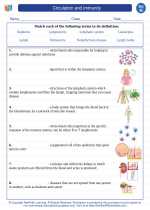Terrestrial Habitats
Terrestrial habitats are the different types of ecosystems found on land. These habitats are characterized by their distinct climate, soil, and vegetation, which support a wide variety of plant and animal life. Studying terrestrial habitats is important for understanding the balance of life on Earth and the impact of human activities on these ecosystems.
Types of Terrestrial Habitats
There are several main types of terrestrial habitats, each with its own unique characteristics:
- Forest: Forests are dominated by trees and are home to diverse plant and animal species. They can be further classified as tropical, temperate, or boreal forests.
- Grassland: Grasslands are characterized by vast open spaces with grasses and few trees. They support a variety of grazing animals and are important for agriculture.
- Desert: Deserts are dry and arid habitats with sparse vegetation. They are home to specialized plants and animals adapted to extreme conditions.
- Tundra: Tundra habitats are found in cold, high-latitude regions and are characterized by low temperatures and a short growing season. They have unique flora and fauna adapted to the cold climate.
- Mountain: Mountain habitats are found at high elevations and can vary widely in climate and vegetation. They are home to specialized species adapted to altitude and rugged terrain.
Factors Affecting Terrestrial Habitats
Several factors influence the characteristics of terrestrial habitats:
- Climate: Temperature, precipitation, and sunlight affect the type of vegetation and animal life that can thrive in a particular habitat.
- Soil Type: The composition and fertility of the soil influence the types of plants that can grow and the availability of nutrients for the ecosystem.
- Topography: The shape and elevation of the land impact the distribution of habitats and the types of species that can inhabit them.
- Human Impact: Human activities such as deforestation, urbanization, and agriculture can significantly alter terrestrial habitats and threaten biodiversity.
Importance of Terrestrial Habitats
Terrestrial habitats are essential for the survival of numerous plant and animal species. They also provide ecosystem services such as oxygen production, carbon sequestration, and soil formation. Understanding and conserving terrestrial habitats is crucial for maintaining biodiversity and ensuring the sustainability of ecosystems.
Study Guide
When studying terrestrial habitats, it's important to consider the following key points:
- Identify and describe the main types of terrestrial habitats and their distinguishing features.
- Examine the factors that influence the characteristics of terrestrial habitats, including climate, soil, and human impact.
- Discuss the importance of terrestrial habitats for biodiversity and ecosystem services.
- Explore specific examples of plant and animal species that are adapted to different terrestrial habitats.
- Investigate the current threats to terrestrial habitats and potential conservation strategies to protect these ecosystems.
By understanding the complexities of terrestrial habitats, we can work towards preserving these vital ecosystems for future generations.
.◂Science Worksheets and Study Guides Eighth Grade. Circulation and immunity

 Worksheet/Answer key
Worksheet/Answer key
 Worksheet/Answer key
Worksheet/Answer key
 Worksheet/Answer key
Worksheet/Answer key
 Vocabulary/Answer key
Vocabulary/Answer key
 Vocabulary/Answer key
Vocabulary/Answer key
 Vocabulary/Answer key
Vocabulary/Answer key
 Vocabulary/Answer key
Vocabulary/Answer key
 Vocabulary/Answer key
Vocabulary/Answer key
 Vocabulary/Answer key
Vocabulary/Answer key
 Vocabulary/Answer key
Vocabulary/Answer key
